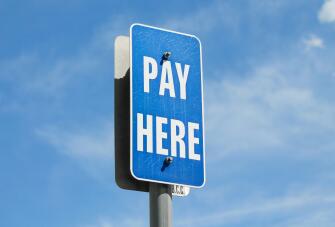Contribution Margin Formula - Calculation and 5 Best Practices
Ever wonder what makes some products more profitable than others? The secret might just be in the contribution margin! Don't worry if you've never heard of it before. We're here to break it down in the simplest way possible.
This magical number helps you figure out which products are making you money and which ones are just draining your resources.
We'll show you how to calculate it, why it's super important, and how you can use it to make smarter business moves. Plus, we'll share our top tips to help you boost your profits even more. So, whether you're a seasoned retail or hospitality business owner or just curious about making more money, this guide is for you.
Let's get started.
What is the contribution margin?
A company's contribution margin is the money left over from sales after paying all the variable costs to make a product. Think of it as the extra cash you get from selling your brilliant products once you've covered all the costs that change with production.
Once you subtract your business' fixed costs from your contribution margin, you get your net income or profit. It's like peeling away the layers to get to the sweet, juicy net tprofit center.
Now, let's get into what variable costs and fixed costs really mean.
Variable costs
Variable costs depend on how much stuff you make or sell, or any expense which could be different from one month to the next. The more you produce, the higher these costs go. Think of a factory that needs raw materials to produce products. If they make more products one month, they need more raw materials. Those raw materials are a variable cost.
Another example? A cafe owner needs coffee, pastries, and other goodies to sell. The more customers they have, the more supplies they'll need. So, the cost of these supplies goes up as sales go up. These variable costs are really crucial when calculating the contribution margin because they directly impact how much money you actually get to keep.
Here are some examples of variable costs:
-
Direct materials: These are the raw materials needed to produce products.
-
Production supplies: Items like oil and lubricants used to keep machines running smoothly.
-
Per unit labor: The amount paid to workers for each unit they complete.
-
Billable wages: Payments to employees based on the number of hours they work.
-
Commissions: Payments given to salespeople for every unit they sell.
-
Freight in/out costs: Shipping or delivery expenses that only occur when goods are ordered for delivery.
-
Variable utilities: Costs for electricity and water that fluctuate depending on the volume of goods or services produced.
Fixed costs
Now let's cover fixed costs. Your company's fixed costs (also known as your fixed expenses, FYI) are the expenses that stay the same no matter how much you produce or sell. They're the costs of simply existing as a business. For example, buying machinery is a one-time fixed cost. Whether you use it a lot or a little, the cost remains the same. But as you sell more units thanks to the machinery, that fixed cost becomes a smaller percentage of each unit's cost when you calculate your profit margin.
Another common fixed cost is rent for your business space. Whether you sell a ton of goods or just a few, the rent stays the same every month. These fixed costs are often considered sunk costs, meaning once you've spent the money, you can't get it back. When you're making decisions about costs or profitability, you generally don't factor these in because they don't change with your level of production.
Here are some examples of fixed costs:
-
Depreciation: Spreading out the cost of property, equipment, or machinery over its useful life.
-
Interest expense: Regular payments on the interest for a loan.
-
Insurance: Premiums paid for coverage under an insurance policy.
-
Rent: Recurring payment for leasing a property or office space.
-
Property taxes: Government-imposed taxes based on the property's assessed value.
-
Salaries: Fixed payments made to employees regardless of hours worked.
-
Fixed utilities: Costs for electricity, water, and gas used for office administration that stay consistent regardless of business activity.
How to calculate contribution margin
Now that you've got a good grasp on what contribution margin is and why it matters, let's learn how it's calculated. Understanding how to crunch these numbers will give you a clear picture of your product's profitability.
Contribution margin formula
Here's how you figure out the contribution margin: you take all the money you make from selling your product and subtract the costs that change with how much you sell. These costs are called variable costs. So, the contribution margin formula looks like this:
Contribution Margin (C) = Total Sales Revenue (R) - Variable Costs (V)
This formula tells you how much each product sale contributes towards covering your fixed costs and making profit. It's like seeing the real cash you're making after all the costs that change with production are taken care of.
Contribution margin calculation example
Let's break it down with an example. Say you sell one of your awesome products for $50 each, and it costs you $20 in variable costs (like materials and direct labor) per unit:
Contribution Margin = $50 - $20 = $30 per unit
So, for each product you sell, $30 goes towards covering your fixed costs and making profit. If you sell 1,000 units, that's $30,000 in total contribution margin ($30 × 1,000 units).
Contribution margin ratio
Now, the contribution margin ratio tells you how much of each dollar from sales becomes profit after covering variable costs. It's a handy percentage to know because it shows how efficient your business is at turning sales into money you keep.
Take a look at the contribution margin ratio formula:
Contribution Margin Ratio (CR) = (Contribution Margin (C) / Total Revenue (R)) × 100%
The closer this CM ratio formula is to 100%, the better. A higher ratio means more money is left to cover your business's fixed costs. But realistically, this ratio is often less than 50%. That's okay though, it's still valuable for understanding your profitability.
This ratio helps you see if your products are making enough profit. If it's too low, it might not be worth selling that product at its current price. By figuring this out, you can decide whether to keep making and selling it or focus on products that bring in more profit.
CM ratio calculation example
Let's see how it works in action. Say your total sales revenue (R) for a product is $100,000, and your variable costs (V) associated with that product amount to $60,000:
First you’re going to want to calculate the Contribution Margin.
$100,000 - $60,000 = $40,000
Now, you just need to work out the Contribution Margin Ratio (CR):
($40,000 / $100,000) × 100% Contribution Margin Ratio (CR) = 40%
In this example, the contribution margin ratio is 40%. This means that for every dollar of sales revenue, 40 cents contribute towards covering fixed costs and generating profit.
Everything in one package
Our POS system enables you to adapt, gain new customers, increase profit and remain future proof.
- Set up, onboard, and train staff in minutes
- Online, delivery, collection, and multi-channel ready
- Access your business insights through any device, on-the-go
- Real-time reporting on staff, customers, sales, margin and stock
- Use standalone, or connect to hundreds of apps including payment systems, accounting software and much more
Get everything you need to trade in one system, including POS terminal, built-in printer, and card machine.
Difference between contribution margin vs gross margin
Now, you may have heard these terms tossed around and wondered: are they basically the same thing? Well, not quite!
The contribution margin and gross margin are basically like cousins, they’re related, but different in their own ways. Contribution margin per unit is all about the extra cash you pocket from each sale after covering the costs that change with production, like materials and labor. It shows how much each sale chips in to cover your fixed costs and make some profit.
On the flip side, gross margin takes a wider view. It's the gap between your sales revenue and the total cost of goods sold (COGS), which covers both fixed and variable costs. This metric tells you how profitable your entire product line is, factoring in all the costs of production.
So, while contribution margin zeroes in on the impact of each sale, gross margin gives you the big picture on your overall profitability. Both are essential tools, but they each give you different insights into your business's financial health.
TIP: We've just taught you how to calculate contribution margin, but learn how to calculate gross profit margin in our handy guide!
Why does the contribution margin matter for your business?
Alright, so why should you care about the contribution margin? Well, here's the lowdown:
Importance in business decision-making
First off, the contribution margin is a big deal for making smart business decisions. It shows you how much money each sale brings in after covering variable costs which helps in making decisions about which products to push, how to price them, and where to cut costs.
But it doesn’t stop there. When paired with a profit and loss statement (P&L statement) and income statement, you get an even clearer picture of your business's financial health. While the net contribution margin zeroes in on individual product profitability, profit and loss statements give you the big picture by showing overall revenue, expenses, and net income. Using both together helps you make more informed decisions, from budgeting to strategic planning.
If you have a high contribution margin, you're in a good spot because more of your net sales revenue is contributing to profit. On the flip side, a low contribution margin might signal that it's time to rethink your pricing strategy.
Role in product profitability
The contribution margin also helps you figure out product profitability. By knowing how much each product contributes to covering fixed costs plus making a profit, you can see which items are your money-makers and which ones are just dead weight.
This insight is crucial because products with a high contribution margin significantly boost your net sales revenue. If some products have a low contribution margin, it might be time to consider if they're worth keeping around or if adjustments are needed to make them more profitable.
Impact on break-even analysis
Your break-even analysis is where you figure out how many units you need to sell to cover all your costs (both fixed and variable). Understanding your contribution margin helps you pinpoint that break-even point.
Once you pass it, every additional sale means pure profit. A high contribution margin means you reach your break-even point faster, leading to increased profitability. So, the contribution margin isn't just a number—it's a tool to help steer your business toward greater profitability by highlighting the impact of revenue and variable costs on your bottom line.
Best practices to improve contribution margin
Want to boost that contribution margin? Of course, you do! Who doesn't? Here's some tips to help:
Reduce variable costs
Let's start by tackling those revenue variable costs. These are the expenses that fluctuate with your business's production or sales volume. For example, in retail, it could be the cost of inventory, while in hospitality, it might include ingredients for dishes or beverages. To trim these costs without sacrificing quality, consider negotiating better deals with suppliers, finding different materials, or optimizing your production processes that maintain your standards but at a lower cost. This approach helps maximize your contribution margin by increasing the profit earned from each sale.
Optimize pricing strategies
Are your products priced competitively enough? Adjusting your pricing strategy can have a massive impact on your contribution cost. For instance, a slight increase in unit selling price can boost profitability, but be mindful not to alienate your customer base (we don't want anyone running from your store). Test out different price points to find the sweet spot where your sales revenue maximizes while still appealing to your target market.
Increase sales volume
Another way to improve your contribution margin is by increasing sales volume. The more you sell, the more you spread out your fixed costs, making each unit more profitable. Think about boosting your marketing efforts, expanding your product line, or exploring new markets to drive sales.
Don't overlook fixed costs
Remember, your fixed costs are the ones that remain constant regardless of what your sales volumes, such as rent and salaries, are. While they may seem inflexible, finding ways to reduce these expenses can positively impact your contribution margin. Explore opportunities to renegotiate leases, optimize energy consumption to lower utility bills, or consolidate operations to minimize overhead. Every dollar saved on fixed costs directly contributes to your bottom line.
Stay up to date with your market dynamics
Lastly, keep a close eye on market dynamics. The business world is always changing, and staying informed helps you make smart decisions. Watch your competitors, track market trends, and be ready to pivot when necessary. Understanding the market can help you adjust your strategies to maintain a healthy contribution margin.
TIP:
Ready to level up your revenue management game? Check out our blog on revenue management strategies and discover how to boost your business's profitability!
How Epos Now point of sale can help with your contribution margin analysis
Looking to boost your contribution margin analysis? Epos Now point of sale (POS) software has got your back. Our POS system isn't just awesome for ringing up your customer sales. Nope, we do so much more than that. With state-of-the-art POS software, you can completely streamline your business finances and improve profitability. Here's how:
Accounting software
Our POS software integrates seamlessly with top accounting software (we're talking all the biggies in the industry. QuickBooks, Sage, DAVO, you name it, we've got the connect). This makes tracking your sales revenue, total variable costs, and fixed expenses simple. Having all your financial data in one place means you can easily calculate your contribution margin and make informed decisions. No more juggling spreadsheets or guessing your numbers; everything is updated in real-time.
Advantages of using POS software and calculators
Using Epos Now POS software comes with a slew of benefits for business owners. Here are a few ways it can help:
-
Accurate data collection: No more digging through piles of receipts. Our software automatically tracks every sale, keeping your financials spot on.
-
Real-time reporting: Get instant insights into sales revenue, costs, and profits. It's like having a financial guru in your pocket, ready to crunch numbers at a moment's notice.
-
Easy calculations: Our built-in calculators make figuring out your contribution margin and gross profit margin a breeze. Math haters, rejoice! (Finally, math that doesn't give you a headache!)
-
Inventory management: Keep tabs on what's flying off the shelves and what's gathering dust. You'll avoid overstocking and cut down on wasted stock. Dusty shelves? Not on our watch!
-
Break-even analysis: Ever wonder how many cups of coffee or T-shirts you need to sell to turn a profit? Our detailed reports and analysis can help you figure this out.
-
Cost control: Find where you can trim costs, whether it's on ingredients or office supplies. Every cent saved boosts your bottom line.
-
Market trends: Be the trendsetter, not the follower! Stay ahead of the curve with sales data analysis. Know what's hot and what's not, and adjust your game plan accordingly.
Oh, and did we mention payment processing? We've got you covered with seamless acceptance of credit cards, mobile payments, and more. Faster transactions mean happier customers—and more sales for you. Swipe, tap, cha-ching!
FAQ about contribution margin for beginners
- What should my contribution margin be?
-
Your contribution margin should ideally be positive, meaning each sale contributes more towards covering fixed costs and generating profit. The higher, the better!
- What is a bad contribution margin?
-
A bad contribution margin means your sales revenue isn't covering even your variable costs. In other words, you're losing money with each sale. So, you want a higher contribution margin if possible!
- Can contribution margin be over 100%?
-
Nope, contribution margin can't be over 100%. It's a percentage that shows how much each sale contributes to covering fixed costs and profit after variable cost ratio is deducted.
- What is a healthy contribution margin?
-
A healthy contribution margin varies by industry, but generally, anything above 20% is considered good. It means you're making enough profit after covering variable costs.
- Does contribution include COGS?
-
Contribution margin doesn't include Cost of Goods Sold (COGS). It only considers variable costs like materials and direct labor.




